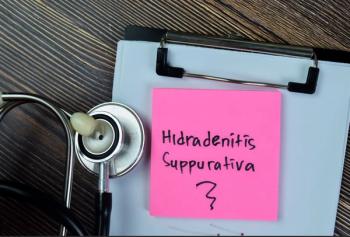
Ruptured Aortic Aneurysm
Severe abdominal pain radiating to the back prompted a 72-year-old man to go to the emergency department (ED). The patient had experienced similar pain 2 days earlier and was treated at another hospital for renal colic on the basis of concomitant microscopic hematuria. He had a history of poorly controlled hypertension.
Severe abdominal pain radiating to the back prompted a 72-year-old man to go to the emergency department (ED). The patient had experienced similar pain 2 days earlier and was treated at another hospital for renal colic on the basis of concomitant microscopic hematuria. He had a history of poorly controlled hypertension. On arrival at the ED, the patient appeared severely ill. A CT scan performed a half hour after presentation revealed an abdominal aortic aneurysm. The images represent the aneurysm without (A) and with intravenous contrast (B). Active extravasation of contrast from the aorta at the time CT was performed can be seen. Nikolaos K. Akritidis, MD, Konstantinos Paparounas, MD, PhD, and George Pappas, MD, of Ioannina, Greece, write that abdominal aortic aneurysm rupture should always be included in the differential diagnosis of acute abdominal pain, particularly in patients with a history of hypertension or atherosclerosis and in those with pain radiating to the back who appear severely ill. Abdominal aortic aneurysms are not rare.1-4 Most are asymptomatic, although some patients experience abdominal, back, or flank pain. CT is the diagnostic test of choice, and the use of contrast enhancement is of particular value in patients with an aortic aneurysm. Ultrasonography is also essential in the detection, evaluation, and follow-up of abdominal aortic aneurysms. The diagnostic sensitivity of both methods approaches 100%.1-3 Because rupture-the primary complication of abdominal aortic aneurysms-is associated with high mortality, current recommendations support prophylactic surgical repair of aneurysms that have a diameter greater than 5 cm. Rupture occurs in fewer than 2% of aneurysms of less than 5 cm, whereas the incidence of rupture for aneurysms greater than 5 cm is 10% to 40%. In addition, an aneurysm that expands more than 1 cm per year is considered highly likely to rupture and should be preventively repaired. Surgical repair could not be performed in this patient because he died 1 hour after admission.
Newsletter
Enhance your clinical practice with the Patient Care newsletter, offering the latest evidence-based guidelines, diagnostic insights, and treatment strategies for primary care physicians.




















































































































































































































































































